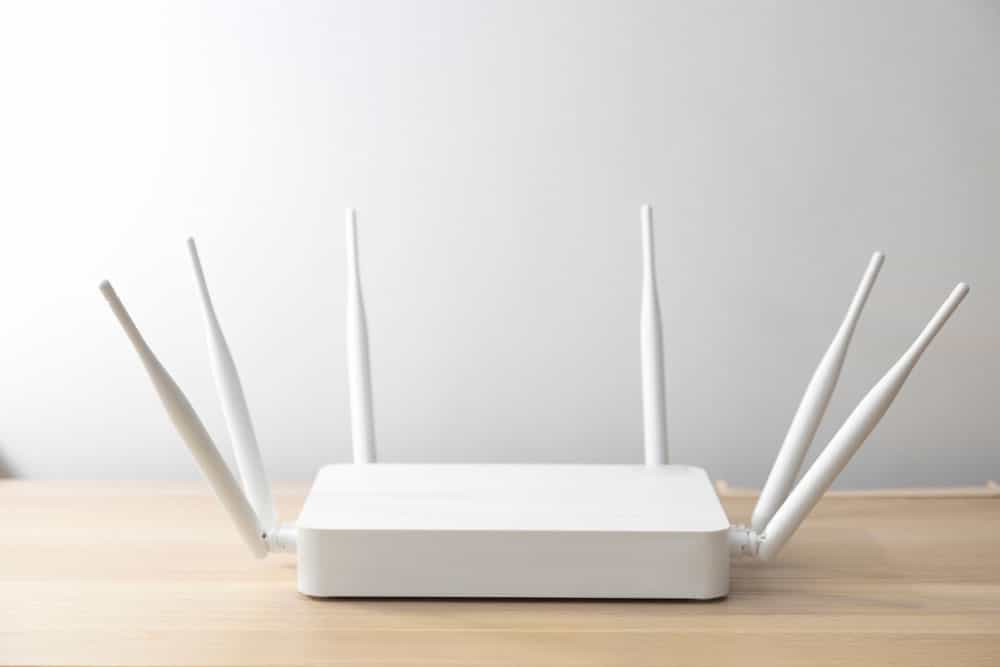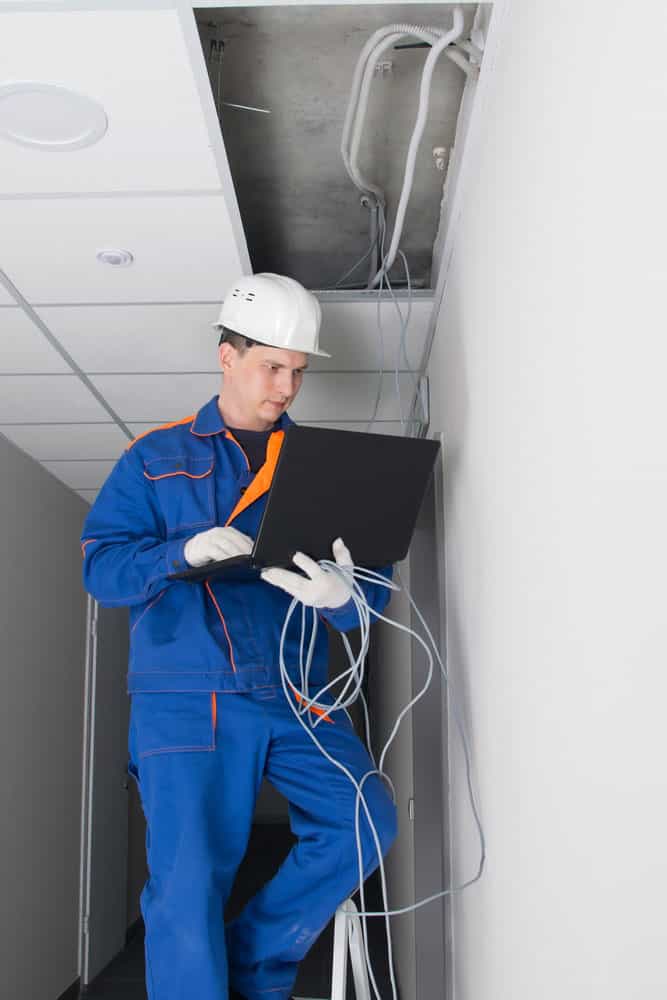Best mesh Wi-Fi for concrete walls, Most office work, and home entertainment systems rely on internet connections, so having the best Wi-Fi network is necessary.
In most cases, we prefer stronger network coverage across all rooms and spaces. Nobody likes dead zones or crowding in certain areas that have better signals.
Over time, traditional wireless networks have proven ineffective when pushing signals through concrete walls.
It is a problem you can overcome by installing mesh Wi-Fi systems. But what are they? Read on as we highlight the best mesh Wi-Fi for concrete walls.
Table of Contents
- What’s Mesh Wi-Fi?
- Best Mesh Wi-Fi for Concrete Walls
- Mesh Wi-Fi vs. Traditional Wireless Networks
- What to Consider When Buying a Mesh Wi-Fi System
- FAQs
- Final Remarks
What’s Mesh Wi-Fi?

(Business office and communication network concept)
Mesh Wi-Fi is a wireless network configuration that uses many wireless access points or nodes to extend signal coverage over a large area. Its integration of many devices allows it to bypass walls and enable signals to reach dead zones in your building.
Additionally, mesh Wi-Fi system nodes act as hop points that relay signals to other nodes. The result is that even the furthest modules or nodes will still get very good Wi-Fi signals.
Best Mesh Wi-Fi for Concrete Walls
Now, look at some of the best mesh Wi-Fi systems that bypass concrete walls.
The ASUS ZenWi-Fi XD6
ASUS ZenWi-Fi XD6 is a top-tier mesh Wi-Fi system supporting advanced functionalities, including parental controls and Quality of Service (QoS).
The system has 802.11k/v (Wi-Fi 6) roaming assistance that allows you to connect to networks faster when moving across rooms.
Additionally, you’ll get a faster connection of 4804Mbps at a higher 5GHz and 574Mbps at 2.4GHz. Also, enjoy its exceptional range of up to 5400 Sq Ft and support of 50 devices. If you need a mesh Wi-Fi system for streaming and gaming, the ASUS ZenWi-Fi XD6 is the one for you.
TP-Link Deco X60
Coming in second place is the TP-Link Deco X60, which promises a connection of 2402Mbps at a higher 5GHz and 574Mbps at 2.4GHz. It has a faster quad-core CPU and Wi-Fi 6 (802.11ac) support for faster roaming and connectivity.
Moreover, the Wi-Fi system has strong coverage of 5000 Sq Ft, which is sizeable and comparable to most office spaces.
Amazon Eero Pro

(Man using a smartphone connected to Wi-Fi)
Regarding reliability, the Amazon Eero Pro is one of the best mesh Wi-Fi systems. It boasts 5000 Sq Ft coverage and Alexa compatibility for simpler smart home configuration and connection with other devices.
Furthermore, the system has excellent 550Mbps speeds spread over a large area with minimal latency. However, it’s costly, and you’ll have to pay a subscription fee to access most network and security features.
Netgear Orbi Wi-Fi 6
The Netgear Orbi comes as a three-pack comprising a single main and two satellite routers. It has an extensive 6000 Sq Ft coverage that’s more than most systems offer.
Moreover, you’ll enjoy higher internet speeds of 2.2Gbps throughout your workspace or home. Additionally, you can optimize your smart home system thanks to its Alexa connectivity.
Mesh Wi-Fi vs. Traditional Wireless Networks

(WiFi wireless router)
Traditional wireless networks and mesh Wi-Fi offer Wi-Fi coverage in a home or workplace. However, there are several key differences between the two.
Coverage
Mesh Wi-Fi uses multiple nodes to provide a more consistent and dependable Wi-Fi connection across a multi-story building. On the other hand, traditional wireless networks are weaker and struggle to provide Wi-Fi coverage in large buildings.
Signal Speed and Performance
Mesh Wi-Fi systems optimize performance by dynamically adjusting the channel and bandwidth allotment to reduce interference.
Consequently, they offer fast and reliable Wi-Fi performance even in large spaces.
Setup and Configuration

(A man installing and configuring a Wi-Fi router)
Setting up mesh Wi-Fi systems is easier than setting up large-scale traditional wireless networks.
Most mesh Wi-Fi systems come pre-configured and will require some easy installation steps before it gets running.
On the other hand, traditional wireless networks with multiple access points are challenging to set up.
Installation and Maintenance Costs
Mesh Wi-Fi systems are costlier to install than traditional wireless networks, especially if you require multiple nodes for wider coverage.
Nonetheless, they are cheaper to maintain since they require less troubleshooting than traditional wireless networks.
What to Consider When Buying a Mesh Wi-Fi System

(Buyers in a consumer electronics retail store)
Here’s what you should consider when choosing a mesh Wi-Fi system for your home or office.
Performance
When selecting the best mesh Wi-Fi system for your workplace or home, performance is a primary consideration.
Therefore, go with a system with low latency which translates to faster Wi-Fi speeds. Additionally, the system should support the most recent Wi-Fi specifications.
Range and Coverage
Consider the type of walls and the number of stories in your building when buying a mesh Wi-Fi system. Go with a system with coverage that matches your intended area of connection.
Ease of Installation
Some mesh Wi-Fi systems require professional expertise to install. Depending on the size of the network system, always go with one that you can configure and maintain without much strain.
Features
Mesh Wi-Fi systems come with all features, some of which may seem redundant. Consequently, go with systems with the exact features you need, including parental control.
Cost
Consider your installation and routine maintenance budgets when buying a mesh Wi-Fi system. Generally, look at all the considerations and check to see if the system is a good value for money purchase.
FAQs
Does 2.4GHz or 5GHz penetrate walls more effectively?
Regarding wall penetration, the 2.4GHz and 5GHz frequencies each have advantages and disadvantages.
The 2.4GHz is a longer-range frequency that penetrates walls effectively. However, it’s in a crowded band which leads to more interference.
On the other hand, the 5GHz is a short-range frequency that struggles to penetrate walls compared to the 2.4GHz. However, it’s a less congested frequency band with faster speeds and higher reliability.
Is mesh Wi-Fi suitable for thick walls?
Mesh Wi-Fi systems, by design, penetrate through most thick walls, including concrete and metal. They are stronger and more effective for bigger spaces than traditional single router systems.
Which is the ideal location for mesh routers?
How you place your mesh routers varies depending on your building’s layout and the location of obstacles, including walls. To ensure maximum coverage, place the main routers in central locations, such as a central hallway. Additionally, place the extenders or satellite units in other rooms but not too far away from each other.
Final Remarks
Mesh Wi-Fi systems are reliable and have consistent connectivity across large spaces. And what contrasts them with traditional wireless is that they do not have dead zones and are easy to configure.
However, they are costly and have many features, some of which may be redundant. Consequently, take your time to find one that fits its role perfectly. Lastly, contact us for any comments, suggestions, or clarifications.




